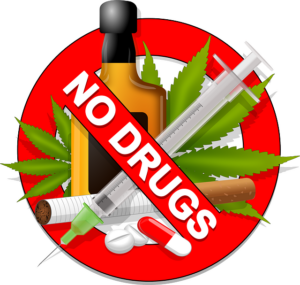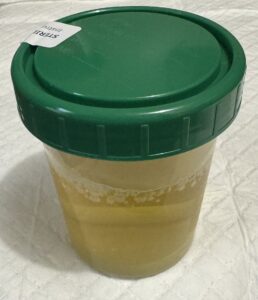Isotonitazene (aka nitazene or “ISO”)is a group of synthetic opioids which have been gaining attention in both medical and illicit drug communities. Originally developed for pain management, these compounds were abandoned due to safety concerns but have since resurfaced in the illicit drug market. Their potency, often exceeding that of fentanyl, has raised alarms regarding their role in the ongoing opioid crisis.
Let’s discuss nitazenes by covering their history, pharmacology, effects, legality, detection, and more.

What Are Nitazenes?
Nitazenes belong to the benzimidazole class of opioids and were first synthesized in the 1950s by pharmaceutical researchers exploring new pain-relief compounds. These drugs were investigated for their analgesic properties, with some variants demonstrating opioid receptor activity far exceeding that of morphine [1].
Despite promising initial findings, concerns over their potency and potential for respiratory depression led to the discontinuation of their development. Unlike fentanyl, which was approved for medical use and later diverted to illicit markets, Nitazenes never gained approval for prescription use. Instead, they faded into obscurity until they reemerged in illicit drug markets in the early 21st century.
Are Nitazenes Legal Or Illegal?
The legal status of Nitazenes varies by country:
- United States: While not explicitly scheduled at the federal level, Nitazenes fall under the Federal Analogue Act, which allows prosecution if they are intended for human consumption. Some states have individually scheduled certain Nitazene analogs [2].
- United Kingdom: Several Nitazenes, including isotonitazene, have been classified as Class A drugs, making their possession and distribution illegal [3].
- European Union: Different member states have placed varying restrictions on Nitazenes, with some classifying them as controlled substances due to their opioid properties [4].
- Australia and Canada: Many Nitazenes are considered controlled substances under analog drug laws [5].
As new Nitazenes are synthesized, regulatory agencies face challenges in keeping up with their emergence in the illicit market.
Appearance/Odor
Nitazenes typically appear as fine white, off-white, or yellowish powders. Some formulations are pressed into counterfeit pills, often mimicking prescription opioids.
They have no distinctive odor, making detection by smell difficult.
How Are Nitazenes Made?
Nitazenes are synthesized through complex chemical processes involving benzimidazole derivatives. Their production requires access to advanced laboratory equipment and precursor chemicals, many of which are legally obtainable but become illicit when used for drug synthesis.
Unlike fentanyl, which has well-documented synthesis routes, Nitazenes require specialized knowledge to produce. This makes their illicit manufacture more sophisticated and potentially more dangerous due to variations in purity and potency [1].
Nitazenes are often pressed into counterfeit pills and falsely marketed as pharmaceutical medication (like Dilaudid “M-8” tablets and oxycodone “M30” tablets).
Pharmacokinetics
Pharmacokinetics refers to how a drug is absorbed, distributed, metabolized, and excreted.
- Absorption: Nitazenes are rapidly absorbed, particularly when administered intravenously or through insufflation (snorting) [6].
- Distribution: These compounds cross the blood-brain barrier efficiently, leading to rapid central nervous system effects.
- Metabolism: Nitazenes undergo hepatic metabolism, primarily via cytochrome P450 enzymes [7].
- Elimination: The drugs are excreted through urine, with half-lives varying based on the specific compound and dosage [8].
Pharmacodynamics
Nitazenes act as potent μ-opioid receptor (MOR) agonists, meaning they bind strongly to opioid receptors in the brain. This binding results in pain relief, euphoria, and sedation. However, Nitazenes can also cause severe respiratory depression, leading to fatal overdoses [9].
Some studies suggest that certain Nitazenes exhibit superagonist activity, meaning they activate opioid receptors more intensely than fentanyl or morphine, making overdose even more likely [10].
Routes of Administration
People intake Nitazenes using one or more of the below methods:
- Oral: Pills or powder consumed directly, leading to slower onset but longer-lasting effects.
- Intravenous (IV) Injection: Produces rapid effects but carries risks of overdose and infection.
- Insufflation (Snorting): Faster onset than oral use, but with risks of nasal damage.
- Smoking: Some users vaporize Nitazenes, which allows for rapid absorption through the lungs.
What Are The Effects Of Nitazenes?
The effects of Nitazenes are similar to other opioids but often more intense. Common effects include:
- Euphoria: A powerful feeling of pleasure or well-being.
- Pain relief: Strong analgesic effects, similar to fentanyl.
- Sedation: Users often experience drowsiness and relaxation.
- Respiratory depression: Slowed or stopped breathing, a major cause of opioid overdose deaths.
- Nausea and vomiting: Common side effects, especially at higher doses.
Time of onset will vary depending on the route of administration. Intravenous is the quickest, usually within 1-2 minutes. Followed by intranasal at 5-10 minutes and then oral at 15-30 minutes.
Immediate effects will last 4-6 hours depending on the dose and administration route.
How Long Do Nitazenes Stay In Your System?
Many standard drug tests do not detect Nitazenes unless specifically designed to do so. Advanced forensic toxicology methods such as LC-MS/MS (liquid chromatography-mass spectrometry) can identify Nitazenes in biological samples [9].
Nitazenes will remain detectable in drug tests for the following approximate timeframes.
- Urine: 1-3 days
- Blood: 12-24 hours
- Hair: Up to 90 days
Supply Chain, Precursor/Sources/Locations
Illicit Nitazenes are often synthesized in clandestine laboratories in China, Eastern Europe, and North America. The supply chain is complex, with shipments often routed through intermediary countries to evade law enforcement.
Nitazine Street Prices
- Powder: $10–$50 per gram, depending on potency and location.
- Pressed pills: $5–$20 per pill, often sold as counterfeit pharmaceuticals [7].
How Much Is a Typical Dose?
A lethal dose can be as low as a few micrograms, making Nitazenes incredibly dangerous due to the risk of accidental overdose.
Who Is Using Nitazenes?
Nitazenes are primarily used by:
- Individuals transitioning from fentanyl or heroin.
- Younger users experimenting with new synthetic opioids.
- People in regions where Nitazenes are increasingly found in the illicit drug supply [8].
What Do Nitazenes Users Say About The Drug?
Many users report extreme potency, which can lead to unintentional overdoses.
Withdrawal is common, with symptoms often described as more severe than fentanyl, with intense cravings, vomiting, muscle pain, and cold sweats [9].
Comparison to Similar Drugs
- Fentanyl: Nitazenes can be up to 40 times more potent than fentanyl and harder to detect.
- Heroin: Effects are stronger and shorter-lasting than heroin.
- Morphine: Nitazenes are 40-500 times more potent than morphine, depending on the analog [10].
Conclusion
Nitazenes are an emerging class of synthetic opioids that pose a significant risk to public health. Their potency, unpredictable effects, and increasing presence in illicit drug markets make them a growing concern. As research and regulation efforts continue, more monitoring and awareness will be essential to curb their spread and mitigate overdose risks. If you suspect someone is experiencing an opioid overdose, seek emergency medical assistance immediately.
References
- Old Drugs and New Challenges: A Narrative Review of Nitazenes. https://pmc.ncbi.nlm.nih.gov/articles/PMC10361140/
- Emerging Drug Trends | National Institute on Drug Abuse (NIDA). https://nida.nih.gov/research-topics/emerging-drug-trends
- Pharmacologic Characterization of Substituted Nitazenes at μ, κ, and δ Opioid Receptors. https://pmc.ncbi.nlm.nih.gov/articles/PMC11026150/
- Plasma pharmacokinetics and pharmacodynamic effects of the 2-benzylbenzimidazole nitazene isotonitazene in male Sprague-Dawley rats. https://pubmed.ncbi.nlm.nih.gov/36526866/
- Evaluation of Short-Term Stability of Different Nitazenes in Human Whole Blood. https://pmc.ncbi.nlm.nih.gov/articles/PMC11594323/
- The in vitro functional profiles of fentanyl and nitazene analogs at human μ-opioid receptors. https://pmc.ncbi.nlm.nih.gov/articles/PMC10680598/
- Mu-opioid receptor selective superagonists produce prolonged G protein activation compared to morphine. https://pmc.ncbi.nlm.nih.gov/articles/PMC10320493/
- Identification of a cardiac ion channel target for illicit nitazene opioids. https://pmc.ncbi.nlm.nih.gov/articles/PMC11649529/
- Associations between opioid overdose deaths and drugs seized by law enforcement in 39 US counties from 2014 to 2019. https://pmc.ncbi.nlm.nih.gov/articles/PMC10423896/
- Comparative neuropharmacology of structurally distinct non-fentanyl novel synthetic opioids. https://pmc.ncbi.nlm.nih.gov/articles/PMC10330921/










